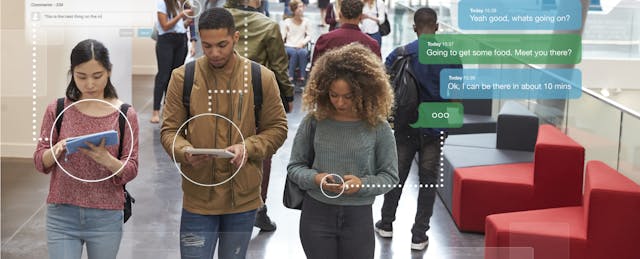Ms. Drasby was nominated to share her thoughts by Laurie Guyon, who wrote for the project in 2017.
Lately, one simple question has been constantly spinning around my head: Is it possible for the world of education to support the future needs of students? Maybe. But we will need to improve the way we talk about—and teach—technology to students.
When academic communities use a negative lens to view emerging technology, such as social media, virtual reality worlds and machine learning, it presents challenges. Our students need to learn these tools to support their future occupations. In today's digital world the people who apply them appropriately may find doors in the business world easier to unlock.
One of the roadblocks for achieving greatness is one's fear of accepting change. New advancements in the digital world don't sit around waiting for us to catch up. Instead, innovative ideas grow and evolve.
One misconception concerns emerging technology. Too often, we look only at the negative impact technology has on our students—it’s easy to overlook the positive benefits. Yet what would happen if classrooms started using these tools on a daily basis? Would mindsets about these tools change? I believe so.
Take social media. When used regularly in the classroom, it has the power to influence positive online interactions and teach good digital citizenship. It fosters an atmosphere where students learn to communicate and collaborate and can be used to expose students to classrooms and other in different countries. It opens authentic opportunities for exploring other cultures and provides opportunities to travel outside the four walls of the classroom. Best of all, students experience challenges to their perceptions and world views.
Virtual reality can take students on journeys to places we were never able to explore before. Now students can venture inside of volcanos or travel through space. Thanks to machine learning, virtual reality is becoming an everyday experience. Machine learning offers opportunities for saving time in a busy day.
With each new day, we are beginning to see these tools embedded in our daily lives. When searching Google Maps for directions have you ever clicked on a 360-degree virtual tour? How many times have you seen people turn to a smart assistant like Siri or Alexa for an answer to a question? Many of the answers we seek are provided to us thanks to the role of machine learning. However, effectively integrating the tools may be a challenge.
The idea of having information right under our fingertips isn’t readily accepted. Times are changing, and the role of the modern student is evolving. Students no longer need to memorize facts. But they do need to know how to access and use all the content available to them. Writing is a must-have skill, which will enable students to collaborate and brainstorm with people outside of their communities. Critical thinking skills are mandatory to filter through the abundance of information offered in the cloud. What our students need for success is access to the tools of tomorrow to become the leaders of tomorrow.


